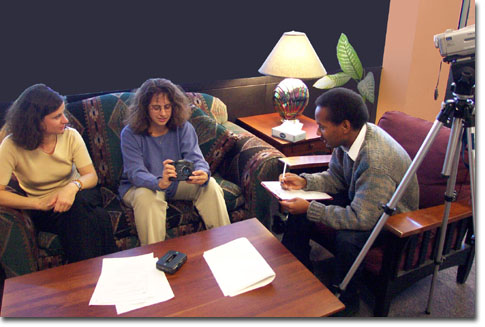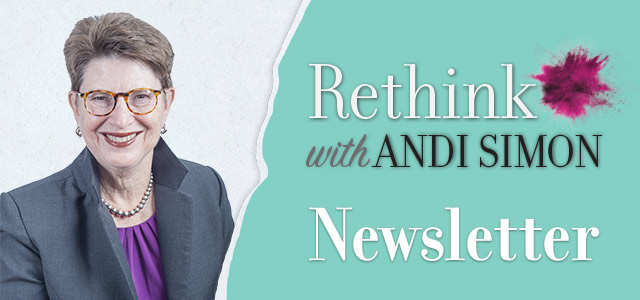On the Brink: “Day in the Life” Anthropology Tool
How Can You Learn More About What People Are Really Doing?
How They Are Solving Problems?
Where Are Their Pain Points?
How could Your Company be their solution? And it doesn’t matter if it is the Business to Consumer or the Business to Business market space.
What you want to know is: How do your customers/employees/partners/prospective clients really “feel” about something — your products, services, problems and workplace. Some of the Anthropological tools in our toolkit which are really useful:
- Go and “hang out” and watch them.
- Maybe it is a good time to do Culture Probes?
- Capture their stories at a listening session.
Or, you might “Spend a Day in Their Life” observing what they are doing and listening to them solve the problems of daily living. This could be a client who buys your stainless rods. Or one who is using your software to manage their manufacturing. Maybe it is a consumer who is using your kitchen sink or the interior designer who helped them purchase it.
Since people buy with emotions and justify their purchases with reason, our anthropological toolkit is designed to help you identify how that user “feels” about your product, service, solution or company.
This toolkit is about observing a “day in the life” of one of your customers. Here’s how you can try it:
Think about doing this with your newest customer or one who has been a “loyal” customer for many years. Each one will teach you a great deal about things that are critically important but difficult to discover just by “asking.” Try not to ask much at all when you are spending time with them. Just listen and discover.
Let’s begin.
Back in 1994, Francis Gouillart and Frederick D. Sturdivant wrote a Harvard Business Review article entitled “Spend a Day in the Life of Your Customers.” While the article had lots of spin to it, the most important point was to urge senior executives and yes, even the CEO, to get out of their offices and literally spend a day following around their customers.
I particularly like their point: “Most industrial companies define ‘customer’ as the next entity in the distribution channel and stop there, routinely gathering all their marketing information accordingly. This is a serious mistake. Each link in the chain right down to the end user is as important as the next. Only market data that reflects desires and needs at every step can give senior managers the kind of comprehensive picture they need to make informed, accurate decisions about new services, product positioning, and the like.”
Instead of delegating your research to marketing—and by so doing, outsourcing your eyes—this is a crucial time to learn how to “spend a day in the life of a customer” and do some anthropology yourself. It is neither as hard nor as mysterious as you might imagine. And once you start, you may want to make it part of the “way you do things” throughout your company.

Here are the steps to take so you can go exploring on your own or with your team:
-
First Frame the Problem. What are you looking for?
- Based on the core ethnographic technique of participant-observation, you will set up a time to participate in and observe the behavior you want to know more about.
- What are you looking to understand? Is it how people use your products to prepare their evening meal, or how they go through the decisions around buying a home, or do you simply want to follow them as they run their business or find new customers for their products?
- There are the actions people take and what those actions really mean to those people, not to you but to them. Where do they fit into how they get life done? Where do you fit into that life?
-
Keep these in mind as you design your experience.
- It is specifically within the unexpected patterns of behavior and meaning that answers lie. Participant observation allows you to capture the meaning of events as you see them unfold. People cannot easily tell you what they did, how they felt or what they were thinking.

- When you plan to spend a day in someone’s life, you are entering into a holistic understanding of events as they unfold and therefore a more complete understanding of what is really important to participants.
- The most important thing you should remember is not to have your answers already in your mind. The purpose of going exploring is to see things with fresh eyes.
- It is specifically within the unexpected patterns of behavior and meaning that answers lie. Participant observation allows you to capture the meaning of events as you see them unfold. People cannot easily tell you what they did, how they felt or what they were thinking.
-
Invite the customer into the experience.
- One of the common anxiety points a CEO asks us is, “How do you ask a customer, a potential customer or a group of employees if you can follow them around for a day, or for part of a day if that might work better?” Simply explain what you are trying to accomplish and most likely, they will comply.
- Second, think of this as mutually beneficial for both you and your customer or employee. The information and hopefully the insights can be shared back with them and will help them do a better job.
-
What type of tools should you use while you are hanging out with the customer or with your employees?
- There are a wide variety of tools and techniques that you will find useful. The purpose of these tools is to help you collect information and observations.

- Some of the things you might try include: taking pictures of things that might be important, or not important. Try not to judge but capture those things that seem to you to be important factors. One way to think about this since you are a stranger in their work space is to pay attention to how people move through space, learning how the things in their environment may impact their behavior, thoughts and motivations.
- Some of the easiest tools to use for capturing information, besides a camera, are: video cameras (even from your iPhone), shop-along and “lend a hand” where you do just that. Ask how you could lend a hand and let them engage you in the process. During your time together, ask them to tell you about themselves, what they are doing, how they got into their jobs, what their biggest challenges are.
- Do a “lunch and listen.” Don’t try to sell them anything. Don’t talk about yourself and your company very much. Instead, encourage them to tell you stories about them. Listen to the stories rather than ask questions that need precise answers. In the stories, you will hear what matters to them and how you could add value in new ways.
- When you are done with your day, sit and dictate or write down everything that you can remember. Do it sequentially and make notes about the notes. Your brain is very miserly and it will forget a great deal about what you just experienced. If you can make it come together as a story, it helps your brain organize what you saw into meaningful elements. Remember, it is still what you think that is important as you search for the meaning of the activities you saw. You still have to work hard to better understand what it meant to that customer or employee you were just shadowing.
- I often refer people to the TV show Undercover Boss for their own training on how to do this effectively, even among their own employees.
- There are a wide variety of tools and techniques that you will find useful. The purpose of these tools is to help you collect information and observations.
Some cases to share.
- Take a look at the Stories2Share section on our website.
- Also, there are 7 case studies in our book, “On the Brink: A Fresh Lens to Take Your Business to New Heights,” which each share with you how business leaders used these tools to better understand their organizations and their market opportunities.
- There are others I like to share to give you something to model your own efforts around. This one comes from the article by Gouillart and Sturdivant which I refer to above:
“… consider the employees at a Weyerhaeuser sawmill located in the small community of Cottage Grove, Oregon. Far from headquarters in Tacoma, Washington, the general manager of this mill started a program that distinguished his operation from Weyerhaeuser’s other mills in terms of productivity, product profitability, and morale. A cross-section of Cottage Grove employees, from the general manager to forklift drivers, began spending a week at a time as ’employees’ of their customers. The shipping manager, for instance, ended up working on the receiving dock of a California distribution center. Customer-service representatives worked as sales assistants in Builders Emporium and Home Depot stores.
“They were there to look, listen, and learn — not to sell. They brought back insights that enabled them to distinguish their mill. They began to wrap their lumber in plastic and paint the ends in a distinctive color. They learned to load the lumber onto railway cars in a way that made it easier to unload. Buyers soon found that they were dealing with field and telephone sales personnel who not only understood their problems but also frequently anticipated them. In customers’ minds, Weyerhaeuser’s lumber became different from any other. It became a branded item in an ocean of undifferentiated offerings.”
Next Steps
Give some thought to what you are trying to learn and how to use corporate anthropology tools to help you. You can learn more from our videos or sign up for our newsletter in which we share tips and stories with you. Better yet, read my book which highlights several examples of these topics in practice:
Enjoy the journey. And please let us know if you would like to talk with us at SAMC. Perhaps a free consult or a workshop would be right for you and your company?

